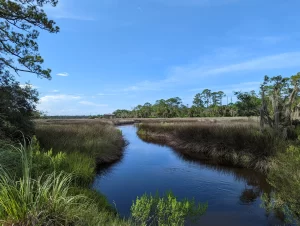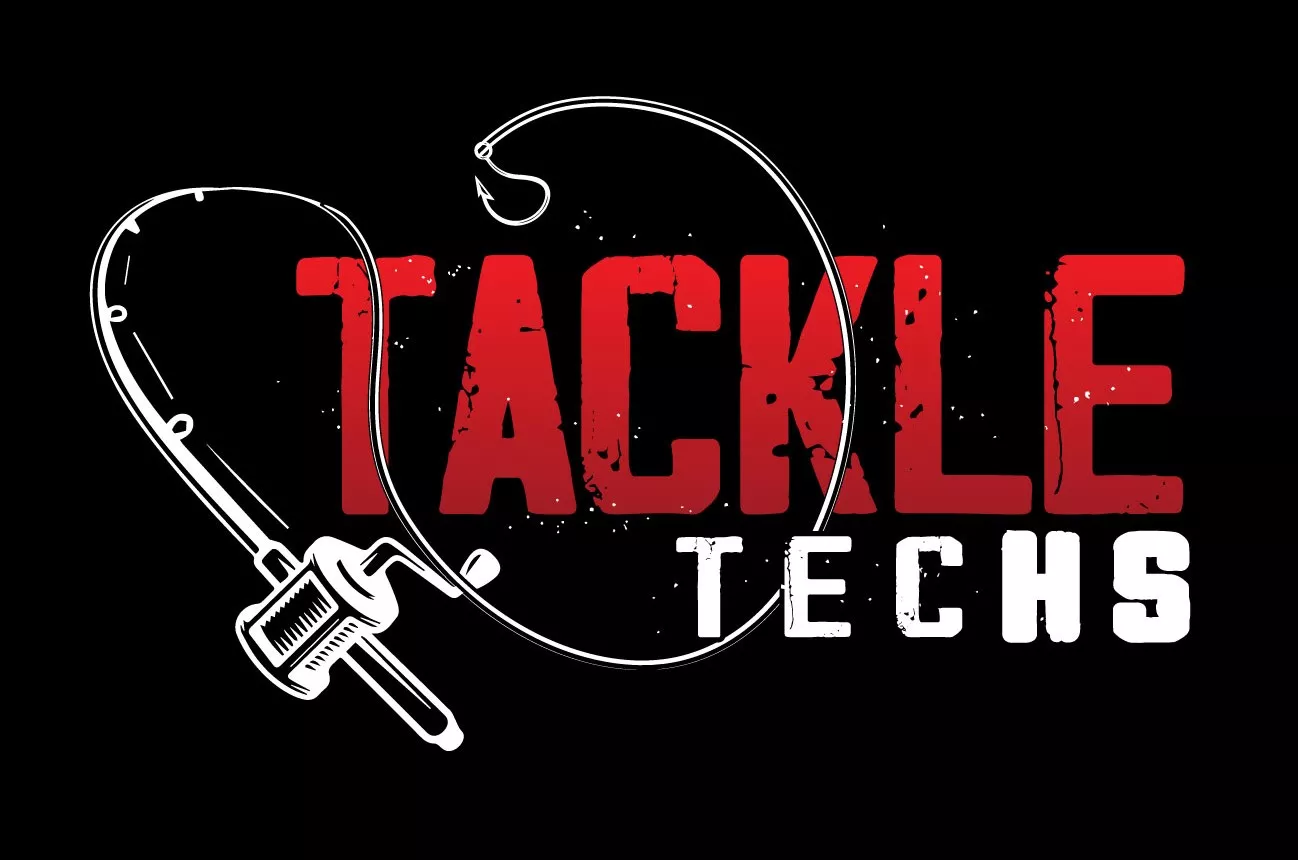Snook Fishing in Florida | 5 Tips and Techniques to Ensure Success
Snook Fishing in Florida
Snook fishing is one of the most exciting and challenging types of fishing in Florida, offering anglers the chance to catch one of the state’s most elusive game fish. Known for their acrobatic leaps and strong, fast runs, snook are a favorite among anglers of all levels of experience. Florida is home to some of the best snook fishing in the world, with a variety of areas and techniques that can be used to catch these elusive fish.
In this article, we’ll take a closer look at snook fishing in Florida, including the best areas to fish, the best techniques and lures to use, and some general tips for catching snook in the Sunshine State.
Whether you’re a seasoned angler or a beginner, this article will provide you with the information you need to start fishing for snook in Florida.
Table of Contents
What are Snook
Snook (Centropomus undecimalis) are a species of game fish found in the coastal waters of the Atlantic Ocean and Gulf of Mexico, ranging from Virginia to Brazil. They are a popular sportfish due to their acrobatic leaps and strong, fast runs.
Snook have a long, slender body with a sloping forehead and a protruding lower jaw, giving them a distinctive appearance. They have a distinct black lateral line that runs down their sides, and their coloration can vary depending on their habitat. In clearer waters, snook will often have a silvery appearance, while in murky or brackish water, they may have a yellow or green tint.
Snook are predatory fish, feeding primarily on small fish, crustaceans, and shrimp. They are opportunistic feeders, meaning they will eat a wide variety of prey depending on what is available. Snook will often hide in structure or wait in areas with moving water to ambush their prey.
Snook are a long-lived species, with a lifespan of up to 20 years. They can grow up to 4 feet long and weigh over 40 pounds, although most fish caught by anglers are in the 5-10 pound range. Snook populations have been impacted by overfishing and habitat loss, particularly in the southern regions of their range.
Many states have implemented regulations and conservation efforts to protect snook populations, including size and bag limits, catch-and-release fishing, and habitat restoration projects. By following best practices for handling and conservation, we can help ensure that future generations will be able to enjoy this unique and exciting game fish.
Where to Find Snook

Snook can be found in a variety of areas, including mangrove shorelines, jetties, bridges, and flats. They are ambush predators, so they tend to hide in areas where they can quickly strike at passing prey. Look for areas where the water is moving, such as tidal creeks or areas where the current flows around structure. Snook also like to hang out near drop-offs, where the water suddenly gets deeper.
When fishing for snook in mangrove shorelines, it is important to cast your lure close to the shoreline and work it slowly and steadily back towards you. Snook will often hide in the roots of the mangroves, so you want to get your lure as close to these areas as possible without getting snagged.
Jetties and bridges are also good areas to target when fishing for snook. These structures provide shelter for snook and other gamefish, and the current flowing around them can create an ideal feeding situation for these predators. When fishing around these structures, try casting your lure close to the rocks or pilings and working it slowly back towards you. Snook will often strike a lure as it is falling or moving erratically.
Flats are another area where snook can be found, particularly in the warmer months. Flats are areas of shallow water with little to no structure, and snook will often cruise these areas looking for prey. When fishing on a flat, it’s important to look for signs of activity, such as tailing fish or nervous water. Cast your lure in the direction of the activity and work it slowly and steadily back towards you.
In summary, when fishing for snook, look for areas with moving water, structure, and areas where the water depth changes suddenly. Mangrove shorelines, jetties, bridges, and flats are all good areas to target when fishing for this elusive game fish. By fishing these areas and adjusting your techniques accordingly, you can increase your chances of landing that trophy snook.
Gear for Snook Fishing
When it comes to snook fishing, having the right gear can make all the difference between a successful day on the water and going home empty-handed. Here’s a closer look at some of the key items you’ll need for snook fishing:
Rod and Reel: A medium to heavy spinning or casting rod and reel is recommended for snook fishing. The rod should be strong enough to handle the fight of a strong, fast fish like a snook, while the reel should have a smooth drag system to help you control the fish during the fight. Look for a rod that is at least 7 feet long for better casting distance and accuracy.
Our article on the Best Saltwater Spinning Reels.Line: The recommended line weight for snook fishing is between 20 and 30 lb test. This will provide the strength and sensitivity you need to feel the bite and fight of the fish, while still allowing you to cast your lure effectively. Braided line is a popular option for snook fishing as it offers high sensitivity and less stretch, allowing you to feel even the slightest bites.
Leader: A leader is a must-have when fishing for snook as the fish have sharp gill plates that can easily cut through the fishing line. A 30-40 lb test fluorocarbon leader is recommended, with a length of 24-30 inches. The leader should be attached to the main line with a swivel for easy replacement and to prevent line twist.
Our FavoriteLures: There are several types of lures that are effective for snook fishing, including topwater lures, soft plastics, jigs, spoons, and crankbaits. The type of lure you choose will depend on the location, water conditions, and the behavior of the fish. It’s recommended to have a selection of lures on hand to be able to adjust to the conditions and the fish’s behavior.
Pliers: A good pair of pliers is essential for snook fishing to help remove hooks from the fish’s mouth. Snook have sharp teeth and gill plates, making it challenging to remove hooks with your hands. A pair of pliers with a wire cutter is also useful for cutting the fishing line and removing split shot.
Our favorite that refuse to rustTackle Bag or Box: A tackle bag or box is a convenient way to organize and transport your gear to and from the fishing location. Look for a bag or box with multiple compartments and pockets for easy access and storage of your lures, hooks, and other fishing accessories.
By having the right gear for snook fishing and being prepared for the conditions, you can increase your chances of having a successful and enjoyable day on the water.
Snook Lures
When fishing for snook, it’s important to choose the right lure based on the conditions and the behavior of the fish. Here are some of the best lures to use in different situations when fishing for snook:
Topwater Lures: Topwater lures are a great choice when fishing for snook in shallow water or around structure such as mangroves or docks. These lures imitate the sound and movement of a baitfish on the surface of the water, attracting snook to the surface. Some popular topwater lures for snook include poppers, walking baits, and chuggers.
Soft Plastic Lures: Soft plastic lures are versatile and can be used in a variety of situations. They are particularly effective when fishing for snook in areas with moderate to strong current, such as inlets or tidal creeks. When fishing in these areas, use a jig head with a soft plastic tail that mimics the movement of a live baitfish. Popular soft plastic lures for snook include paddle tails, jerk baits, and swimbaits. Here is our review of the DOA Shrimp, a very popular snook lure.
Jigs: Jigs are a great choice when fishing for snook in areas with structure, such as bridges or jetties. When fishing in these areas, cast your jig near the structure and work it slowly back towards you. Bucktail jigs and paddle tail jigs are popular styles for snook.
Crankbaits: Crankbaits are a good option when fishing for snook in deeper water or when targeting larger fish. These lures are designed to dive and wobble in the water, mimicking the movement of a wounded baitfish. Lipless crankbaits and diving crankbaits are popular styles for snook.
Spoons: Spoons are a classic lure that can be effective when targeting snook in areas with moving water, such as inlets or tidal creeks. These lures consist of a concave, spoon-shaped piece of metal that wobbles and flashes in the water, mimicking the movement of a wounded baitfish.
When choosing a lure to use when fishing for snook, it’s important to consider the conditions and behavior of the fish. By choosing the right lure and adjusting your technique based on the situation, you can increase your chances of catching that trophy snook.
What is the Best Time to Catch Snook
The best times to fish for snook are early morning and late afternoon/early evening, particularly during the warmer months. Snook are most active during these times as they are seeking out prey in the shallows or along structure. In addition, during these times, the light levels are lower and the water temperature is cooler, making for more comfortable fishing conditions for both the angler and the fish.
During the cooler months, snook can be found in deeper water, where the water temperature is more consistent. When fishing for snook in deeper water, it’s important to look for areas with structure or cover, such as artificial reefs or rocky ledges. Snook will often move to these areas to feed, particularly during tidal changes or when the current is strong.
Another good time to fish for snook is during the incoming or outgoing tide. During these times, the water is moving, which can create ideal feeding situations for snook. When fishing during the tide, it’s important to position yourself in an area where the water is moving, such as near a tidal creek or inlet, and cast your lure in the direction of the current.
In addition to the time of day and tidal conditions, the time of year can also impact the behavior of snook. During the warmer months, snook will move into shallower waters to feed and spawn. During the cooler months, snook will move to deeper waters to seek out consistent water temperature.
In summary, the best times to fish for snook are early morning and late afternoon/early evening, particularly during the warmer months. During the cooler months, snook can be found in deeper water, particularly near areas with structure or cover. Fishing during the incoming or outgoing tide can also create ideal feeding situations for snook. By considering these factors and adjusting your technique accordingly, you can increase your chances of landing that trophy snook.
Advanced Tips
f you’re an experienced angler and looking to take your snook fishing game to the next level, consider these advanced tips:
Time Your Retrieve: Snook are notoriously finicky eaters and will often follow a lure without striking. To increase your chances of getting a strike, try timing your retrieve. Cast your lure and let it sit for a few moments before slowly retrieving it. Then, pause again before continuing your retrieve. This mimics the movement of a wounded baitfish and can entice snook to strike.
Use Fluorocarbon Leaders: Snook have keen eyesight and can be easily spooked by fishing line. To reduce the chances of the fish seeing your line, consider using a fluorocarbon leader. Fluorocarbon is less visible in the water and can increase your chances of getting a strike.
Match the Hatch: Snook feed on a variety of baitfish, including mullet, pilchards, and shrimp. To increase your chances of getting a strike, try to match the hatch by using lures that mimic the baitfish in the area. Pay attention to what the fish are feeding on and try to replicate that with your lure selection.
Pay Attention to Tides and Currents: Snook are often found in areas with moving water, such as tidal creeks or areas where the current flows around structure. Pay attention to the tides and currents in the area you’re fishing and adjust your techniques accordingly. For example, if the tide is outgoing, try casting your lure upstream and letting it drift back towards you.
Go Big: While snook can be caught on a variety of lures, many anglers swear by big, flashy lures. Try using larger topwater lures or swimbaits to entice bigger fish. Snook are opportunistic feeders and will often go after a larger meal if it presents itself.
By incorporating these advanced tips into your snook fishing strategy, you can increase your chances of landing that elusive game fish. Remember to always handle the fish with care and follow local regulations to ensure the long-term sustainability of this species. Happy fishing!
Snook Fishing Sebastian Inlet

Sebastian Inlet, located on the east coast of Florida, is one of the premier destinations for snook fishing in the state. Known for its strong tidal currents and abundant baitfish, the inlet offers anglers the chance to catch trophy-sized snook throughout the year. Here’s a closer look at how to catch snook in Sebastian Inlet:
- Choose the Right Bait
When fishing for snook in Sebastian Inlet, live bait can be very effective. Some of the best live baits for snook include pilchards, pinfish, mullet, and shrimp. Live bait can be purchased at local bait and tackle shops, or caught using a cast net or a sabiki rig. When choosing live bait, look for healthy, active baitfish that are of the appropriate size for the snook in the area.
2. Rigging Your Bait
When rigging your live bait, it’s important to use a strong and reliable rig that can handle the power of a snook. A simple rig that is effective for snook is a 2/0 to 4/0 circle hook with a 30-40 lb test fluorocarbon leader. Tie your hook to the leader with a Palomar knot and attach a split shot or small sinker to the leader about 12-18 inches above the hook. This will help keep your bait near the bottom where snook are often found.
3. Know the Tides
The tides play a crucial role in snook fishing in Sebastian Inlet. Snook are most active during the incoming and outgoing tides, when the water is moving and baitfish are pushed through the inlet. It’s important to time your fishing trip based on the tides to increase your chances of catching snook. High tides are typically the best time to fish for snook in the inlet.
4. Be Patient
Snook fishing in Sebastian Inlet can be challenging at times, and it’s important to be patient and persistent. Snook are known for their powerful runs and acrobatic jumps, making them a challenging game fish to catch. It may take several casts and retrieves before you get a strike, so don’t give up too quickly.
In summary, using live bait can be a great way to catch snook in Sebastian Inlet. By choosing the right bait, rigging your bait properly, looking for structure, timing your fishing trip based on the tides, and being patient, you can increase your chances of catching that trophy snook.
Is Snook Good to Eat
Snook is considered a good eating fish by many anglers and seafood enthusiasts. The meat is firm and white, with a mild flavor that is similar to other white fish such as grouper or redfish. The meat is also low in fat and high in protein, making it a healthy and nutritious option.
Here’s a delicious recipe to try if you’ve caught some snook and want to try it for yourself:
Grilled Snook with Lemon Butter Sauce
Ingredients:
- 2 lbs of snook fillets
- 1/4 cup of olive oil
- 1 teaspoon of salt
- 1 teaspoon of black pepper
- 1/4 cup of unsalted butter
- 2 cloves of garlic, minced
- 1/4 cup of lemon juice
- 1/4 cup of chopped fresh parsley
Instructions:
Preheat your grill to medium-high heat.
Brush the snook fillets with olive oil and season with salt and black pepper.
Place the fillets on the grill, skin side down. Grill for about 4-5 minutes on each side, or until the flesh is firm and opaque.
While the snook is grilling, make the lemon butter sauce. Melt the butter in a small saucepan over low heat. Add the garlic and sauté for about 1 minute, or until fragrant. Add the lemon juice and parsley and stir to combine.
When the snook is done, remove it from the grill and transfer to a serving platter. Drizzle the lemon butter sauce over the fillets and serve hot.
Enjoy this delicious grilled snook with lemon butter sauce recipe and savor the taste of this delectable fish.
Snook Handling and Conservation

Snook are a popular game fish, but it’s important to handle them with care to ensure their survival. When handling snook, it’s important to wet your hands before touching the fish to prevent removing their protective slime layer. Avoid handling the fish by their gills or eyes, as this can cause serious injury.
If you plan to release the fish, do so quickly and carefully. Hold the fish upright in the water and gently move it back and forth to help oxygenate its gills. If the fish is not swimming on its own after a few moments, continue to hold it in the water and move it back and forth until it is able to swim away.
It’s also important to practice catch-and-release fishing when targeting snook. Snook populations have been impacted by overfishing and habitat loss, so it’s important to do what you can to conserve this species. Consider using circle hooks, which are less likely to cause serious injury to the fish, and avoid using treble hooks or lures with multiple hooks that can cause extensive damage.
In addition to handling snook carefully, it’s important to be aware of local regulations and guidelines for snook fishing. Many states have specific size and bag limits for snook, and it’s important to follow these regulations to ensure the long-term sustainability of this species.
Overall, snook fishing can be a thrilling and rewarding experience, but it’s important to handle these fish with care and respect for their survival. By following best practices for handling and conservation, we can help ensure that future generations will be able to enjoy this unique and exciting game fish.

